Looking to move to Arizona in the near future but uncertain about crucial details such as the cost of living, the proficiency of their education system, or the robustness of their job market? No need to worry; we’ve got you covered. Here are just a few of the reasons you have every right to be thrilled about moving to The Grand Canyon State.
Top 5 Cities in Arizona
The five most populated cities in Arizona are:
- Phoenix
- Tucson
- Mesa
- Chandler
- Gilbert
Let’s dig into the nitty gritty details of living in each city to help illustrate the differences and benefits, to see which one could be your new potential home.

Phoenix
Population
In accordance with the annual estimations of the U.S. Census Bureau, Phoenix is the most populated city in all of Arizona by a veritable country mile. The population of Phoenix currently sits at 1,624,569 people, which puts it at more than double the population of any other city in the state. This means that the Arizona capitol is densely populated, but as you’re about to see, it’s densely populated for good reason.
Weather: Given Phoenix’s desert climate, you can expect high temperatures, low humidity levels, and little-to-no rainfall. All of which leads to a city where the weather is often warm with dry heat.
- The average annual temperature in Phoenix is 73.7 °F
- December is the month with the highest humidity levels, clocking in at 46.78%.
- June is the month with the lowest humidity levels, remaining at a low 13.20%.
- August is the month in which Phoenix most regularly sees its highest number of rainy days, with an average of 4.5 days’ worth of rain falling in this month.
- June is the month in which the city sees its lowest number of rainy days, with an average of 0.46 days.
- The annual rainfall for the city is minuscule, with only an average of 10.2 inches per year.
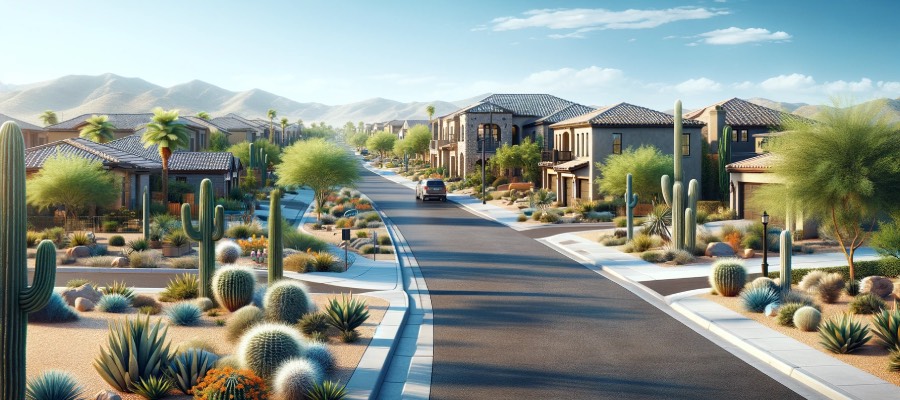
Cost of Living
While the overall cost of living in Phoenix is greater than the national average, given its population density, it’s easy to see why. Plus, upon digging into the finer details, it becomes apparent that the city’s cost of living is actually lower in price in several key aspects.
- The overall cost of living is 3.7% higher than the national average and 1.5% higher than Arizona’s state average.
- The cost of groceries is 2.7% lower than the national average but 1.2% higher than the state average.
- The cost of health is a full 7.8% lower than the national average and 3.0% lower than the state average.
- The cost of housing is 3.5% higher than the national average but 4.3% lower than the state average.
- The median cost of a home in Phoenix is approximately $346,100, which is higher than the national average of $291,700 but lower than the Arizona state average of $349,300.
- The cost of utilities is 1.8% higher than the national average but 0.9% lower than the state average.
- The cost of transportation in Phoenix is a full 17.9% higher than the national average and 10.9% higher than the state average.
When looking into the finer details, it becomes apparent that the true culprit behind Phoenix’s relatively high cost of living is actually the cost of its public transportation systems, which is substantially higher than average. Aside from that, though, key elements such as health and groceries are actually below average on all fronts, and its housing rates are lower than Arizona’s average at large.
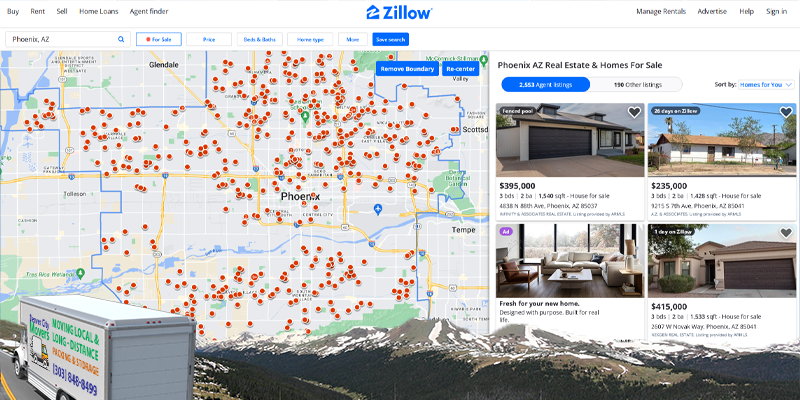
Education System
Ever since 1983, the Arizona Educational Foundation has been an active force in reinforcing and re-envisioning the curriculum and learning environment of the Arizona school system. Simultaneously, in more recent years, the Educational Coalition of Arizona has made huge strides in encouraging involvement from not only the parents of students but the community at large in playing a critical role within the schools and to help generate tax revenue to further benefit the system’s educational purposes. This has led to impressive education systems throughout Arizona, but especially in Phoenix.
Phoenix is home to 200 public school districts as well as more than 400 charter/private schools. Arizona as a whole has also seen its students’ SAT scores rise incrementally every year for the past six years now, with their students now averaging 563 in reading and writing and 553 in math. This reflects tremendously upon the state and city’s efforts to improving their educational system at every turn.
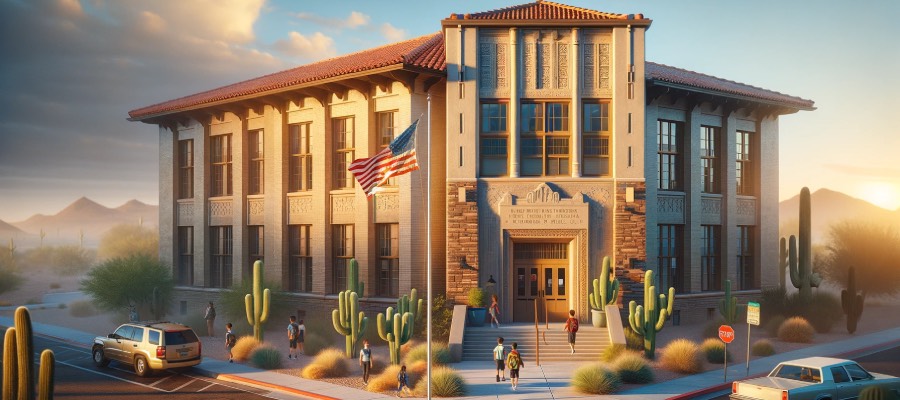
Top-rated Schools
The five top-rated schools in Phoenix are:
- Alhambra Traditional School
- Desert Trails Elementary School
- Horizon Honors Elementary School
- Valley Academy – Reid Traditional Schools
- Villa Montessori – Phoenix Campus
Job Market
One of the leading industries in Phoenix is tourism, with Phoenix Sky Harbor International Airport recording more than 45 million flying through each year. Simultaneously, technological industries, financial industries (J.P. Morgan), and health industries (Phoenix Children’s Hospital) employ a large number of people in Phoenix, as does Amazon.

The average annual salary in Phoenix is $54,870, a few thousand dollars below the national average, but the unemployment rate in Phoenix is 0.7% lower than the national average.
Average Home Price: $427,586
Average Rental Price: $1,590 per month
Things to Do
While in Phoenix, make sure to visit iconic institutions such as Footprint Center (home of Phoenix Suns) or Chase Field (home of the Arizona Diamondbacks), as well as more locally artisanal treats such as Roosevelt Row (whose recurring First Friday Art Walks are delightful).
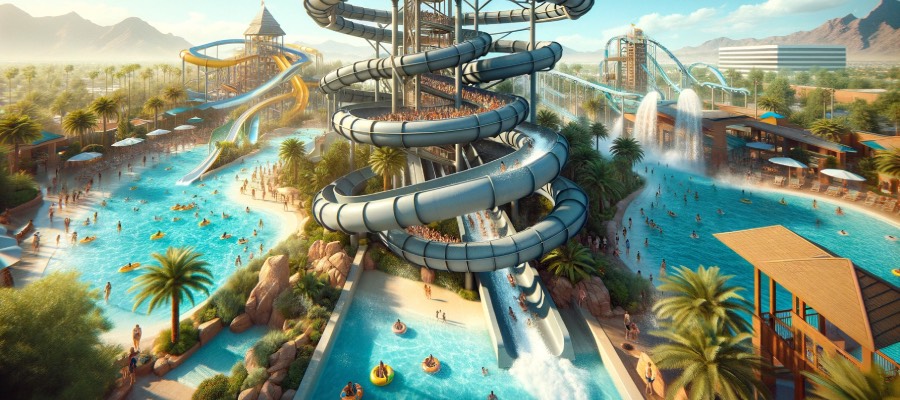
Tucson
Population: In accordance with the annual estimations of the U.S. Census Bureau, Tucson is the second-most populated city in all of Arizona, with 543,242 people, which is still less than half the population of Phoenix. So if the limelight of Phoenix and its dense populations sounds like a bit too much for you, fret not, because Arizona has many wonderful alternatives.
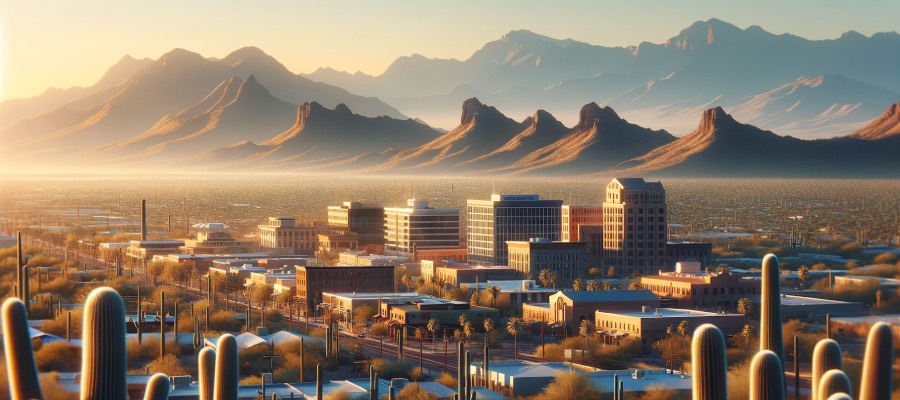
Weather: Much like Phoenix, Tucson has what is considered to be a desert climate, with high heat, low humidity levels, and little-to-no rainfall throughout the year.
- The average annual temperature in Tucson is 71.0 °F
- December is the month with the highest humidity levels, with 44.77%.
- May is the month with the lowest humidity levels, staying at 14.98%.
- July is the month in which Tucson most regularly sees its highest number of rainy days, with an average of 8.17 days’ worth of rain.
- May is the month in which the city sees its lowest number of rainy days, with an average of 0.93 days.
- The annual rainfall for the city is minute, with only an average of 10.2 inches per year.
Despite its surface-level similarities to the climate of Phoenix, Tucson does offer averagely higher humidity levels and more days’ worth of rainfall than the capital city does.
Cost of Living
If Phoenix’s prices seemed a bit steep for you, then Tucson once again provides a nice alternative. Whereas Phoenix’s overall cost of living was higher than the national and Arizona’s state averages, Tucson’s cost of living is substantially lower than both averages.

- The overall cost of living is 8.4% lower than the national average and 10.6% lower than Arizona’s state average.
- The cost of groceries is 4.5% lower than the national average and 3.9% lower than the state average.
- The cost of health is 18.5% lower than the national average and 13.7% lower than the state average.
- The cost of housing is 19.6% lower than the national average and 27.4% lower than the state average.
- The median cost of a home in Tucson is approximately $271,800, which is lower than the national average of $291,700 and substantially lower than the Arizona state average of $349,300.
- The cost of utilities is 0.6% lower than the national average and 3.3% lower than the state average.
- The cost of transportation in Tucson is 3.4% lower than the national average and 10.4% lower than the state average.
As one can clearly see from the statistics, Tucson’s smaller population and lack of reliance on tourism make the city a much more affordable option for newcomers than the hustle and bustle of Phoenix.
Education System
Ever since 1983, the Arizona Educational Foundation has been an active force in reinforcing and re-envisioning the curriculum and learning environment of the Arizona school system. Simultaneously, in more recent years, the Educational Coalition of Arizona has made huge strides in encouraging involvement from not only the parents of students but the community at large in playing a critical role within the schools and to help generate tax revenue to further benefit the system’s educational purposes. This has led to impressive education systems throughout Arizona, including in Tucson.
Tucson Unified School District is the largest school district in southern Arizona and recently saw three of its schools rank among the top 50 schools in the country, according to U.S. News & World Report in 2021.
Top-rated Schools
The five top-rated schools in Tucson are:
- University High
- Basis Oro Valley
- Basis Tucson North
- Basis Tucson Primary
- Legacy Traditional School – Northwest Tucson
Job Market
Tucson’s most primary fields of employment are in leisure and hospitality. It does not have the focus on tourism or financial businesses that Phoenix does, its job market instead resembling something much more akin to the city’s own more laidback tone. The largest employing companies in Tucson are the University of Arizona, Raytheon, and Davis-Monthan Air Force Base.
The average annual salary in Tucson is $51,380, approximately $5,000 less than the national average, but Tucson’s unemployment rate is 0.5% lower than the national average.
It seems only fair to point out that though Tucson’s average annual salary is lower than the national or Phoenix averages, it also has a substantially lower cost of living than either of those and thus more than evens out in favor of the Tucson resident.
Average Home Price: $330,721.
Average Rental Price: $1,249 per month
Things to Do
Take in the scenic sights and sounds of Tucson with bike tours, hot air balloon rides, the historic ‘The Tour Too Tough to Die’ tour, or scale the side of the iconic Mt. Lemmon.
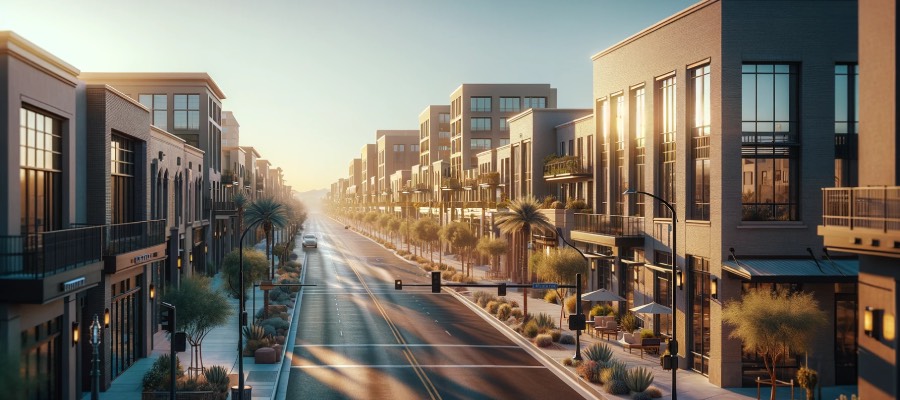
Mesa
Population: In accordance with the annual estimations of the U.S. Census Bureau, Mesa is the third-most populated city in Arizona, with a population of 509,475 people. While only about 35,000 less than its predecessor, it (much like Tucson) is dwarfed in comparison to Phoenix’s population. We’ve already seen the gargantuan difference between Phoenix and Tucson, but how much of a difference do 35,000 people really make? Let’s find out.
Weather: In a very similar fashion to its fellow neighboring Arizona cities, Mesa has a desert climate that is high in heat, low in humidity levels, and features only slightly more rainfall than residents of Phoenix and Tucson can hope to expect.
- The average annual temperature in Mesa is 73.1 °F
- December is the month with the highest humidity levels, with 47.70%.
- June is the month with the lowest humidity levels, staying at 13.33%.
- February is the month in which Mesa most regularly sees its highest number of rainy days, with an average of 4.23 days’ worth of rain.
- June is the month in which the city sees its lowest number of rainy days, with an average of 0.53 days.
- The annual rainfall for Mesa is 11.2 inches per year.
While the temperature is, on average, higher than its neighboring cities, and it seemingly has fewer days of rainfall, Mesa does ultimately get more rainfall per year than either Phoenix or Tucson, just in a more condensed amount of days.

Cost of Living
Despite Mesa’s even smaller population than Tucson, it does not replicate the downsizing effect upon the economic state of the city that the jump from Phoenix to Tucson did. Instead, the overall cost of living in Mesa is actually higher than it is even in Phoenix.
- The overall cost of living is 4.2% higher than the national average and 2% higher than Arizona’s state average.
- The cost of groceries is 2.8% lower than the national average but 1.1% higher than the state average.
- The cost of health is a full 7.8% lower than the national average and 3.0% lower than the state average.
- The cost of housing is 8.7% higher than the national average and 1.1% higher than the state average.
- The median cost of a home in Mesa is approximately $353,800, which is higher than the national average of $291,700 and higher than the Arizona state average of $349,300.
- The cost of utilities is 0.1% higher than the national average but 2.6% lower than the state average.
- The cost of transportation in Mesa is 14% higher than the national average and 7.0% higher than the state average.
Whereas Tucson featured shockingly low costs for living at every turn and Phoenix featured an overall cost of living that was bolstered up by an unusually high cost for transportation, Mesa’s high cost of living stems from not only transportation but also substantially higher housing costs.
Education System
Ever since 1983, the Arizona Educational Foundation has been an active force in reinforcing and re-envisioning the curriculum and learning environment of the Arizona school system. Simultaneously, in more recent years, the Educational Coalition of Arizona has made huge strides in encouraging involvement from not only the parents of students but the community at large in playing a critical role within the schools and to help generate tax revenue to further benefit the system’s educational purposes. This has led to impressive education systems throughout Arizona, including in Mesa.
Mesa boasts neither the widespread acclaim of Tucson’s schools nor the sheer scale and output of Phoenix’s overwhelmed yet high-scoring schools, but the Mesa Unified School District is above average. Recent research has shown that Mesa does have a student-to-teacher ratio of 17 to 1 and that of its current 57,956 students, over 46% have tested to be proficient in both math and reading skills.

Top-rated Schools
The five top-rated schools in Mesa are:
- Self Development Charter School
- Arizona Agribusiness & Equine Center – Red Mountain
- ASU Preparatory Polytechnic STEM Academy
- Franklin Junior High School
- Arizona Agribusiness & Equine Center, Inc. – Mesa
Job Market
Mesa’s job market is overwhelmingly self-reliant and self-sufficient. The majority of the largest employers of workers in the city are foundational core pillars of Mesa and Arizona’s own workforces, such as Mesa Public Schools, The City of Mesa, and The State of Arizona. Other large employers include companies such as Boeing and Banner Health.
The average annual salary in Mesa is $44,322, which is not only substantially lower than the national average but also significantly lower than Phoenix or Tucson’s respective salaries as well. The unemployment average is 4.10%.
This means that Mesa has both a larger cost of living than either of its neighboring cities and a lower annual salary.
Average Home Price: $435,848
Average Rental Price: $1,568
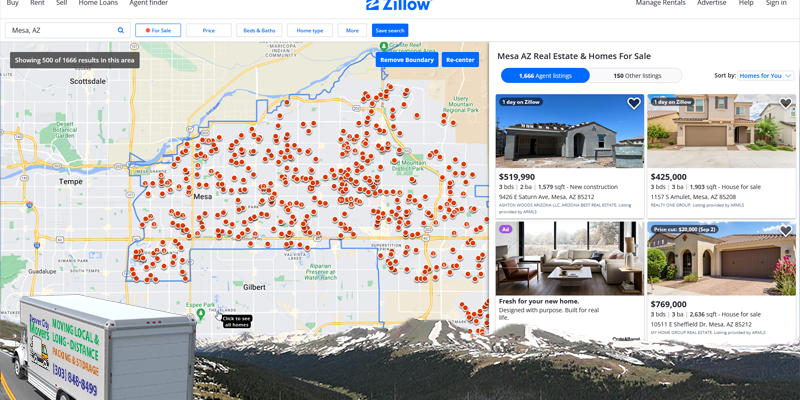
Things to Do
Much like its job market, Mesa demonstrates an uncommon amount of self-reliance in terms of its economy and features as a city, resulting in the city featuring some of the best museums and educational attractions in the entirety of the state. Installments such as the children’s i.d.e.a. Museum, the Mesa Arts Center, and even the Arizona Museum of Natural History have all earned rave reviews and keep guests (both local and from out of town) thrilled, even on repeat visits.
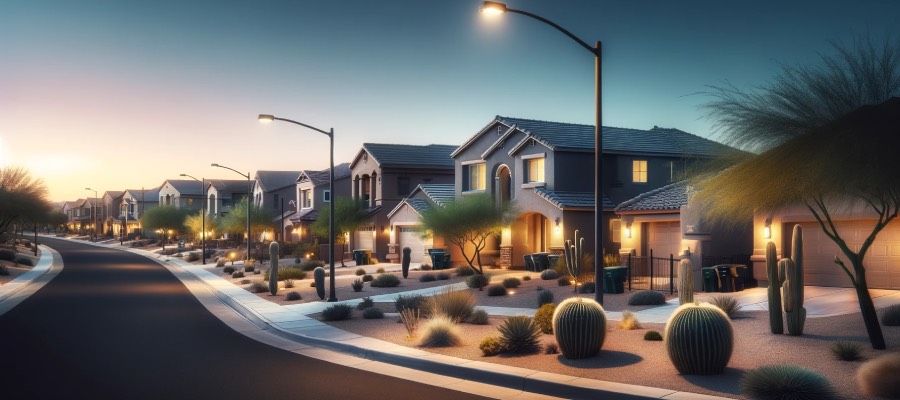
Chandler
Population: More than just the name of everyone’s favorite goofball from Friends, Chandler is the fourth-most populated city in Arizona, with 279,458 people living there currently. Even when solely comparing that number to its immediate predecessor, that figure is over 200,000 people less than Mesa’s population. But will this more substantial downsizing of population result in downsizing on costs in the same way Tucson’s did?
Weather
Much like the rest of Arizona, Chandler has a desert climate that stems from high heat, low humidity levels, and even less rainfall than any of the other cities mentioned thus far.
- The average annual temperature in Chandler is 73.3 °F
- December is the month with the highest humidity levels, clocking in at 45.26%.
- June is the month with the lowest humidity levels, remaining at a low 13.24%.
- August is the month in which Chandler most regularly sees its highest number of rainy days, with an average of 4.23 days’ worth of rain falling in this month.
- June is the month in which the city sees its lowest number of rainy days, with an average of 0.67 days.
- The annual rainfall for Chandler is even less than any prior city, with only an average of 9.8 inches per year.
Differing only by slight variables, the weather in Chandler is almost equivalent to that of Phoenix. The temperature average is a few decimals lower, and it gets 0.4 inches less of rainfall per year, but aside from these minute differences, the two are strikingly similar.
Cost of Living
In spite of Chandler’s exponentially smaller population, its overall cost of living is substantially higher than both the national average and its Arizonan peers, especially when it comes to the actual cost of housing.
- The overall cost of living is 13% higher than the national average and 10.8% higher than Arizona’s state average.
- The cost of groceries is 1.0% lower than the national average but 2.9% higher than the state average.
- The cost of health is 7.8% lower than the national average and 3.0% lower than the state average.
- The cost of housing is 38.1% higher than the national average and 30.2% higher than the state average.
- The median cost of a home in Chandler is approximately $424,900, which is higher than the national average of $291,700 and higher than the Arizona state average of $349,300.
- The cost of utilities is 1.6% higher than the national average but 0.9% lower than the state average.
- The cost of transportation in Chandler is 12% higher than the national average and 5.0% higher than the state average.
While most of the costs of living in Chandler are largely equivalent to other Arizona cities (with the exception of Tucson, which still remains exceptionally affordable by comparison to these other cities alone), the actual cost of housing in Chandler has skyrocketed well past the point of any of the other cities. If one thought the 3.5% of Phoenix or 8.7% of Mesa was too high, one may be inclined to reconsider such deals in light of Chandler’s 38.1% leap in cost.
Education System
Ever since 1983, the Arizona Educational Foundation has been an active force in reinforcing and re-envisioning the curriculum and learning environment of the Arizona school system. Simultaneously, in more recent years, the Educational Coalition of Arizona has made huge strides in encouraging involvement from not only the parents of students but the community at large in playing a critical role within the schools and to help generate tax revenue to further benefit the system’s educational purposes. This has led to impressive education systems throughout Arizona, including in Chandler.
Chandler Unified School District No. 80 (the primary school district in Chandler) is an exceedingly well-testing and highly regarded public school district, consistently ranking above average. It currently has 43,790 students enrolled, giving it a student-to-teach ratio of 18 to 1. That’s not quite as exemplary as Mesa’s 17 to 1 ratio, but Chandler more than makes up for it in their scores, in which over 58% of their students have tested to be proficient in both math and reading, a full 10% higher than Mesa’s students.
Top-rated Schools
The five top-rated schools in Chandler are:
- Arizona College Prep Erie Campus
- Legacy Traditional School – Chandler
- Great Hearts Academies – Archway Chandler
- Knox Gifted Academy
- Great Hearts Academies – Chandler Prep
Job Market: In stark contrast to the largely self-contained city of Mesa, the largest employers in Chandler are by-and-large outside corporations. Intel Corporation employs over 10,000 workers, Wells Fargo employs 4,625 workers, and Bank of America employs 3,500 workers. Local employers such as the Chandler Unified School District and Chandler Fashion Center also make the top ten list of employers in the city.
The average annual salary in Chandler is $51,183, which is a few thousand dollars less than the national average but is about on par with Phoenix’s average and is substantially more than Mesa’s average.
The unemployment average in Chandler is 4.02%, the lowest average of any city thus far. All of these factors put Chandler on largely the same level of income as Phoenix but with a noticeably higher cost of housing.
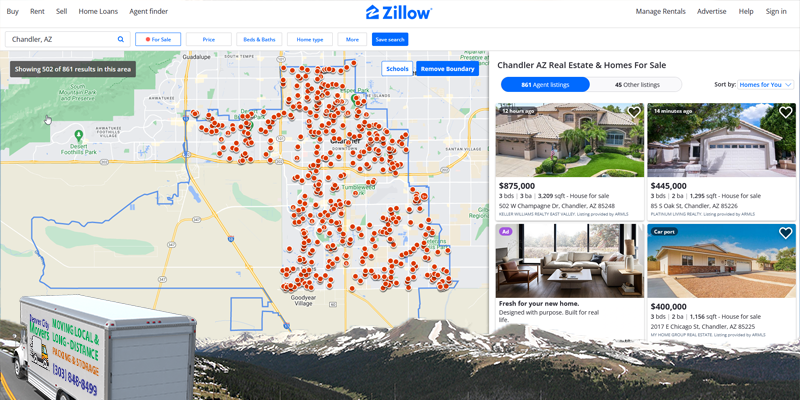
Average Home Price: $549,367
Average Rental Price: $1,882 per month
Things to Do
Chandler features many public parks, including the iconic Desert Breeze Park which gives guests the chance to ride on the world-famous Desert Breeze Railroad. The Crayola Experience has earned rave reviews since its installation, as has the Solar System Walk, both of which are great educational and thrilling experiences for the whole family.
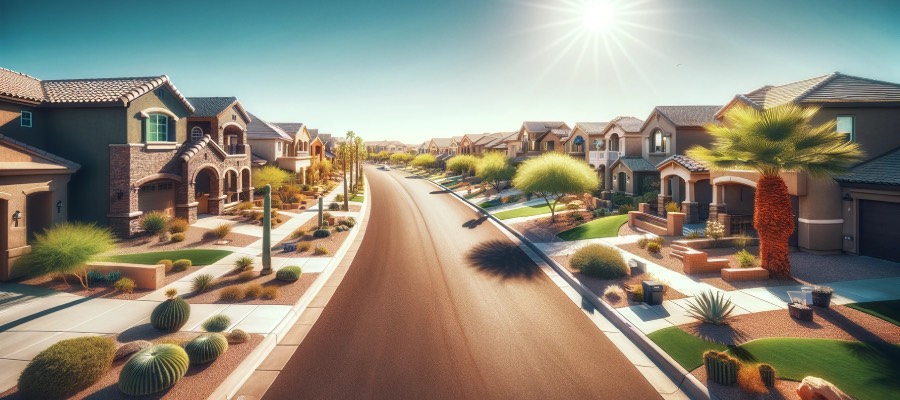
Gilbert
Population: Continuing the trend of cities in Arizona named in accordance with common first names of regular guys, Gilbert is fifth-most populated city in Arizona. Sporting a population of 273,136 people, it is almost equivalent to the population of prior entry, Chandler. But given that meaningful correlations between population and the actual economics of the cities have been few-and-far-between since Tucson, will Gilbert’s economic landscape be equivalent to Chandler’s or entirely different?
Weather
The weather of Gilbert is very similar to that of its fellow Arizonan cities, with a desert climate featuring high heat, low humidity levels, and exceedingly spare rainfall.
- The average annual temperature in Gilbert is 73.1 °F
- December is the month with the highest humidity levels, clocking in at 47.77%.
- June is the month with the lowest humidity levels, remaining at a low 13.33%.
- August is the month in which Gilbert most regularly sees its highest number of rainy days, with an average of 4.23 days’ worth of rain falling in this month.
- July is the month in which the city sees its lowest number of rainy days, with an average of 0.67 days.
- The annual rainfall for Gilbert is even less than any prior city, with only an average of 9.8 inches per year.
Gilbert actually sports the exact same figures as Chandler for its rainfall averages, with its humidity levels being an exact match for Mesa’s. Suffice to say, these weather figures are a solid encapsulation of Arizona’s climate at large.
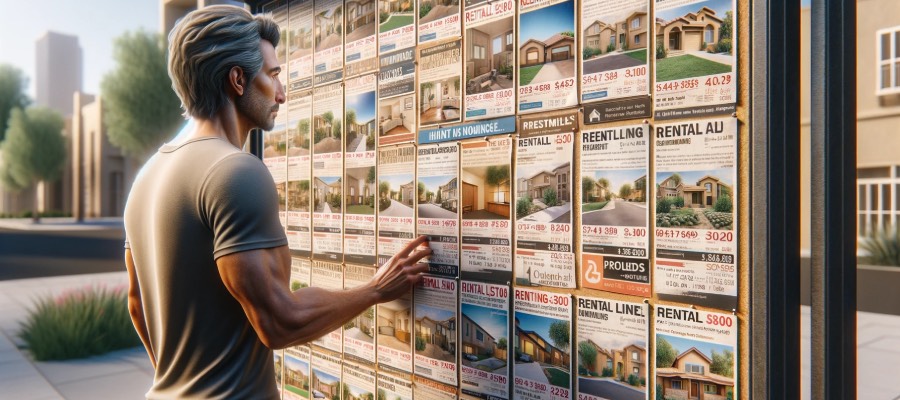
Cost of Living
In very much the same way Chandler’s population dropped but cost of living rose dramatically, Gilbert’s cost of living is substantially higher than one might expect. Even just in comparison to the equivalently populated city of Chandler, living in Gilbert comes with a larger price tag.
-The overall cost of living is 16.3% higher than the national average and 14.1% higher than Arizona’s state average.
- The cost of groceries is 0.8% lower than the national average but 3.1% higher than the state average.
- The cost of health is 7.8% lower than the national average and 3.0% lower than the state average.
- The cost of housing is 43.9% higher than the national average and 36.1% higher than the state average.
- The median cost of a home in Gilbert is approximately $476,700, which is higher than the national average of $291,700 and higher than the Arizona state average of $349,300.
- The cost of utilities is 0.4% higher than the national average but 2.3% lower than the state average.
- The cost of transportation in Gilbert is 18.1% higher than the national average and 11.1% higher than the state average.
Featuring an even higher increase in the price of housing than Chandler did, Gilbert’s cost of living is largely on par with its fellow Arizonan cities in every other aspect, but the housing cost alone sends its overall figure skyrocketing to the highest of any of these cities.
Education System
Ever since 1983, the Arizona Educational Foundation has been an active force in reinforcing and re-envisioning the curriculum and learning environment of the Arizona school system. Simultaneously, in more recent years, the Educational Coalition of Arizona has made huge strides in encouraging involvement from not only the parents of students but the community at large in playing a critical role within the schools and to help generate tax revenue to further benefit the system’s educational purposes. This has led to impressive education systems throughout Arizona, including in Gilbert.
Gilbert’s school system is nearly identical to Chandler’s in every way, which is great news for potential new Gilbert residents. The Gilbert Public Schools District is very highly rated and tests exceedingly well. With 32,661 students currently enrolled, they have a student-to-teacher ratio of 17 to 1 (which is on par with Mesa’s stellar ratio), and testing has found that 58% of their students are proficient in both reading and math (which is on par with Chandler’s exemplary results).
Top-rated Schools
The five top-rated schools in Gilbert are:
- Gilbert Classical Academy High School
- Leading Edge Online Academy
- Legacy Traditional School – Gilbert
- Bridges Elementary School
- Neely Traditional Academy
Job Market
Gilbert’s job market features a host of notable private employers who bring work to the city, such as GoDaddy, Northrop Grumman, and Banner Health. While the vast majority of the largest employers in Gilbert are outside businesses, much like Mesa and Chandler, it does offer many self-reliant employment options as well such as the Gilbert Unified School District.
The average annual salary in Gilbert is $48,652, which puts it right in the middle of Mesa’s roughly $44,000 and Chandler’s $51,000. The average unemployment rate in Gilbert is 3.49%, the lowest of any of the cities featured here.
Average Home Price: $592,895
Average Rental Price: $1,921 per month
Things to Do: Gilbert is best known for being a farming community. Thus, their economy is much more reliant on this and the pre-discussed businesses rather than any kind of tourism, leading to less overt entertainment options being present than in some of the other cities. However, it still has more than its fair share of exciting sightseeing opportunities, such as the Hale Centre Theatre or the gorgeous St. Anne’s Roman Catholic Church. And what would any stay in the self-proclaimed ‘Hay Capital of the World’ be without taking a trip to the Riparian Preserve at Water Ranch?
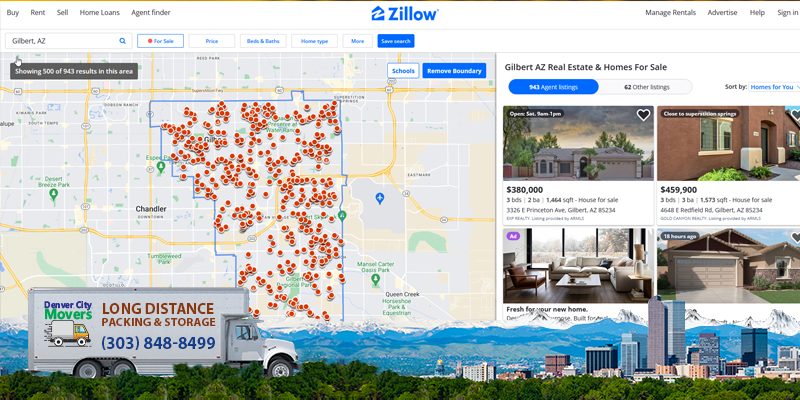
Is Arizona Safe?
While a beautiful place to live, Arizona has struggled with surging crime rates in the past. However, the state has made significant strides toward improving these issues. The past several years have seen the state’s property crime rate diminishing substantially, as just this year, the state’s rate dropped another 7%. Granted, that does still put it at 2.7% higher rates than the national average.
Simultaneously, the violent crime rates in Arizona actually went up over the course of the last year, but given the circumstances (pandemic, mass riots, general unrest, etc.), they actually went up less than anticipated. While the entire country saw a dramatic increase in violent crime rates over the past year, Arizona only saw a 10% increase. That still leaves it above the national average, but only by 0.8%.
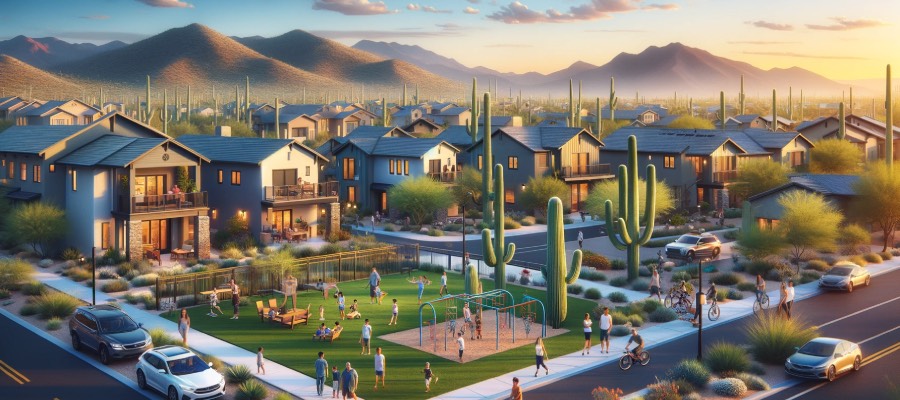
The Safest Cities in Arizona
- Florence. Population: 27,571. Median Income: $49,534.
- San Luis. Population: 35,574. Median Income: $37,255.
- Sahuarita. Population: 32,053. Median Income: $80,525.
- Oro Valley. Population: 46,634. Median Income: $83,341.
- Prescott Valley. Population: 47,459. Median Income: $51,909.
- Gilbert. Population: 259,629. Median Income: $102,793.
- Maricopa. Population: 53,165. Median Income: $74,515.
- Surprise. Population: 144,620. Median Income: $69,076.
- Buckeye. Population: 83,608. Median Income: $71,707.
- Lake Havasu City. Population: 56,243. Median Income: $53,605.
Notably, the only of the top five most populated cities in Arizona to make the list of the top ten safest cities is Gilbert, the fifth-most city. Other entries on the former list, such as Phoenix or Tucson, have more than triple the amount of residents (at least) as most of the cities on this latter list.
So when statistics show that Phoenix is the city in Arizona with the highest crime rate, it is simply a reflection of that being the city with the most people in it by a very wide margin. The safest city on this latter list (Florence) is also the one with the lowest population.
